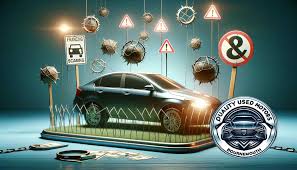Auto insurance is a legal and financial necessity for every driver. It protects you from costly repairs, medical bills, and liability claims if you’re involved in an accident. Yet, many drivers don’t fully understand their policies, leading to underinsurance or overpaying for coverage.
This comprehensive guide will explain everything you need to know about car insurance—types of coverage, how premiums are calculated, money-saving tips, and common mistakes to avoid. By the end, you’ll be equipped to choose the best policy for your needs.
What Is Auto Insurance?
Auto insurance is a contract between you and an insurance company where you pay a premium in exchange for financial protection against vehicle-related risks. In the event of an accident, theft, or damage, your insurer covers some or all of the costs, depending on your policy.
Key Components of Auto Insurance:
- Premium – The amount you pay (monthly, quarterly, or annually) for coverage.
- Deductible – The out-of-pocket amount you pay before insurance kicks in (e.g., $500).
- Coverage Limits – The maximum amount your insurer will pay for a claim.
- Policy Term – Typically 6 months or 1 year, after which you renew.
Types of Auto Insurance Coverage
Auto insurance policies include different types of coverage, each serving a specific purpose.
1. Liability Insurance (Mandatory in Most States)
- Covers costs if you’re at fault in an accident.
- Bodily Injury Liability (BIL) – Pays for others’ medical expenses.
- Property Damage Liability (PDL) – Covers damage to others’ vehicles or property.
- Minimum requirements vary by state.
Best for: All drivers (legally required).
2. Collision Coverage (Optional)
- Pays for your car’s repairs after an accident, regardless of fault.
- Usually required if you have a car loan or lease.
Best for: New or expensive cars.
3. Comprehensive Coverage (Optional)
- Covers non-collision damage (theft, fire, hail, vandalism, animal strikes).
- Often paired with collision coverage (called “full coverage”).
Best for: Drivers in high-risk areas (theft, extreme weather).
4. Personal Injury Protection (PIP) / Medical Payments (MedPay)
- Pays for your and your passengers’ medical bills after an accident.
- PIP also covers lost wages and rehabilitation costs (in “no-fault” states).
Best for: Drivers without health insurance or in no-fault states.
5. Uninsured/Underinsured Motorist Coverage (UM/UIM)
- Protects you if hit by a driver with no insurance or insufficient coverage.
Best for: All drivers (highly recommended).
6. Gap Insurance (Optional)
- Covers the difference between your car’s value and loan balance if totaled.
Best for: Leased or financed vehicles.
7. Rental Reimbursement & Towing Coverage (Add-Ons)
- Pays for a rental car while yours is being repaired.
- Covers towing and labor costs after a breakdown.
Best for: Drivers without roadside assistance
How Auto Insurance Premiums Are Calculated
Insurers assess risk based on multiple factors:
1. Driving Record
- Accidents, DUIs, and speeding tickets increase premiums.
- A clean record lowers costs.
2. Age & Gender
- Teen drivers pay the most (high-risk group).
- Men under 25 often pay more than women (statistically higher accident rates).
3. Vehicle Type
- Luxury, sports cars, and EVs cost more to insure.
- Safety-rated and older cars are cheaper.
4. Location
- Urban areas (more accidents, theft) = higher premiums.
- Rural areas = lower risk.
5. Credit Score (In Most States)
- Better credit = lower premiums (seen as more responsible).
6. Annual Mileage
- Low-mileage drivers (under 7,500 miles/year) get discounts.
7. Coverage Choices
- Higher deductibles = lower premiums (but more out-of-pocket if you claim).
- Full coverage costs more than liability-only.
How to Save Money on Car Insurance
1. Compare Quotes Annually
- Rates vary widely—always shop around before renewing.
2. Bundle Policies
- Home + auto insurance with the same company = discounts.
3. Ask for Discounts
- Safe driver, good student, military, anti-theft devices, pay-in-full discounts.
4. Increase Your Deductible
- A $1,000 deductible vs. $500 can lower premiums.
5. Drive Less
- Usage-based insurance (UBI) programs (e.g., Progressive Snapshot) track mileage/safety for discounts.
6. Maintain Good Credit
- Improves eligibility for lower rates.
7. Drop Unnecessary Coverage
- If driving an old car, consider dropping collision/comprehensive.
Common Auto Insurance Mistakes to Avoid
1. Only Buying Minimum Liability Coverage
- State minimums are often too low—you could be personally sued for excess costs.
2. Not Reporting Changes
- New address, marital status, or vehicle? Update your insurer to avoid claim denials.
3. Letting Coverage Lapse
- A gap in coverage leads to higher rates later.
4. Filing Small Claims Frequently
- Too many claims = higher premiums or non-renewal.
5. Assuming All Policies Are the Same
- Cheap insurance may have poor customer service or slow claims.
What to Do After a Car Accident
- Check for Injuries – Call 911 if needed.
- Move to a Safe Location – If possible, avoid blocking traffic.
- Exchange Information – Get the other driver’s name, insurance, and license plate.
- Document the Scene – Take photos, videos, and witness statements.
- Notify Your Insurer – Report the accident immediately.
- File a Claim – Follow your insurer’s process.
Auto Insurance Myths Debunked
Myth 1: “Red Cars Cost More to Insure.”
- False – Insurers don’t factor in color.
Myth 2: “Older Drivers Always Pay More.”
- False – Mature drivers (50–65) often get lower rates due to experience.
Myth 3: “Your Insurance Covers All Modifications.”
- False – Aftermarket parts may need additional coverage.
Myth 4: “Insurance Follows the Driver, Not the Car.”
- Mostly False – Insurance typically follows the vehicle, not the driver.
The Future of Auto Insurance
Digital Claims Processing – Faster payouts via AI and mobile apps.
Telematics & Usage-Based Insurance (UBI) – Pay-as-you-drive models.
Autonomous Car


